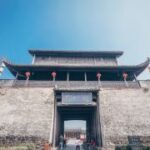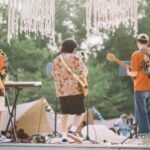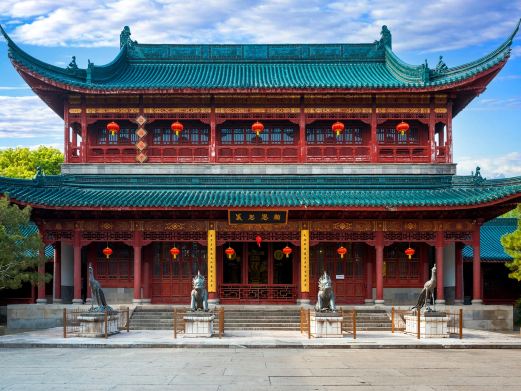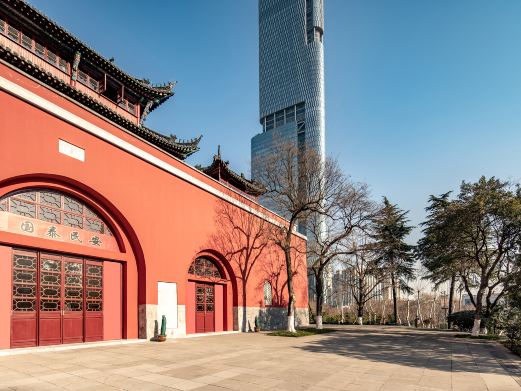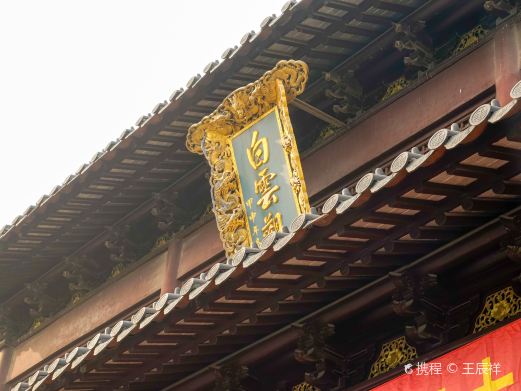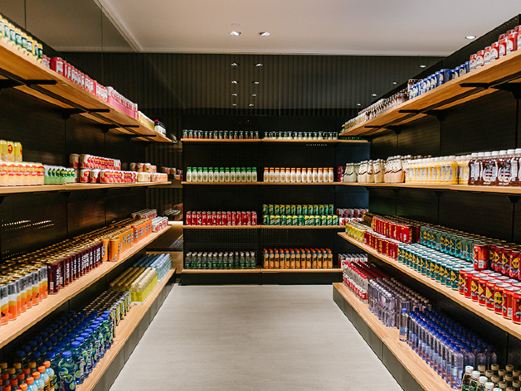Located on the western outskirts of Ningbo, the Liang Zhu Scenic Area is a love-themed park set against the backdrop of the Liang Zhu love story, and it is also the birthplace of the story. The park is centered around the Liang Shanbo Temple and features various landscapes connected by the Liang Zhu legend, such as the Wansong Academy, Liang Shanbo’s ancient tomb, and Liang Zhu cultural sculptures. Although the park mostly consists of recently constructed ancient-style buildings that lack a strong historical atmosphere, the delicate Jiangnan-style garden features are quite exquisite. Many couples visit to witness their love, and the park occasionally hosts matchmaking events, making it a rather romantic location. The park is not too large and can be easily explored on foot.
Upon entering the scenic area and turning right, you cross a small bridge to arrive at the main path that runs through the park, known as the ‘Eighteen Farewells Path.’ Following this path will lead you around the park and to the exit. After crossing the bridge, you encounter a building that houses the Liang Zhu Love Post Office, one of only two love-themed post offices in the country, the other being in the Summer Palace. The post office quickly became one of the park’s attractions, offering a ‘love postmark’ similar to Shanghai’s Tian’ai Road ‘heart postmark.’ You can mail your love and emotions with a special postmark, or purchase a ‘love passport’ to stamp each anniversary, leaving a mark. The post office also provides timed mail services, allowing you to send a love letter on each wedding anniversary, with different postmarks for different years. Continuing along the path, not far ahead is the Liang Zhu Academy (Wansong Academy), where Liang Shanbo and Zhu Yingtai studied together for three years. The academy is an ancient building from the Ming and Qing dynasties, with plum blossoms in the courtyard and a bamboo forest behind, exuding an antique and elegant charm. The Butterfly Art Pavilion within the academy displays a large collection of butterfly specimens from around the world, which is worth a visit. Proceeding through Phoenix Mountain and the Guanyin Hall, you arrive at the banks of the Yao River, where Zhu Yingtai’s family residence is located. The architecture of the Zhu Mansion is quite imposing, radiating the aura of an official and wealthy family. Particularly noteworthy is the intricate carving on a large bridal sedan chair in the Si Xin Hall. Walking not far towards the exit, you reach Liang Shanbo’s tomb. The horizontal tablet in front of the tomb is inscribed with ‘Imperially Ennobled Liang Saint Jun Shanbo’s Tomb,’ with a noticeable crack in the middle, said to have appeared when Zhu Yingtai mourned Liang Shanbo. Behind the tomb stands Zhu Yingtai’s tablet, with a nearby area for purchasing flowers to offer on the tomb as a sign of mourning. Next to the ancient tomb is the Liang Shanbo Temple, the main structure of the park. The temple is divided into three sections: the mountain gate, the main hall, and the rear hall. Upon entering the mountain gate, a ceramic mural depicting the entire story of Liang Zhu from their brotherhood at the grass bridge to their transformation into butterflies catches the eye. Opposite the main hall, there is a resplendent ancient stage where traditional opera performances occasionally take place, adding to the ambiance.In the main hall, there are statues of Liang Shanbo and Zhu Yingtai. This is also a place where people pray for a free and happy marriage. When you come to the square where the Liang-Zhu music fountain is located, in the middle of the square is the sculpture of Liang Shanbo and Zhu Yingtai turning into butterflies, which is one of the symbols of the scenic area. You can take a photo here. In the adjacent Liang-Zhu Culture Museum, there are exhibitions such as the love tree and Liang-Zhu themed reliefs to see, and there are also some interactive projects to participate in. If you want to understand the history of Liang-Zhu culture and its influence on folk culture, you may wish to visit here. Opening hours: Open from 08:00 to 17:00 from January 1st to September 30th; open from 08:00 to 22:00 from October 1st to October 31st; open from 08:00 to 17:00 from November 1st to December 31st. Preferential policies: Children: Free for those under 1.3 meters (excluding); discounted for those between 1.3 meters (including) and 1.5 meters (including). The elderly: Free for those over 70 years old with senior citizen card or ID card. Military personnel: Free for active-duty military personnel with officer ID card. Disabled people: Free with disability certificate. Service facilities: Parking lot: [Underground parking lot of Liang-Zhu Cultural Town]. Reference price: ¥0/hour. Address: Liang-Zhu Cultural Park, Gaoqiao Town, Yinzhou District. Parking spaces: 400.

